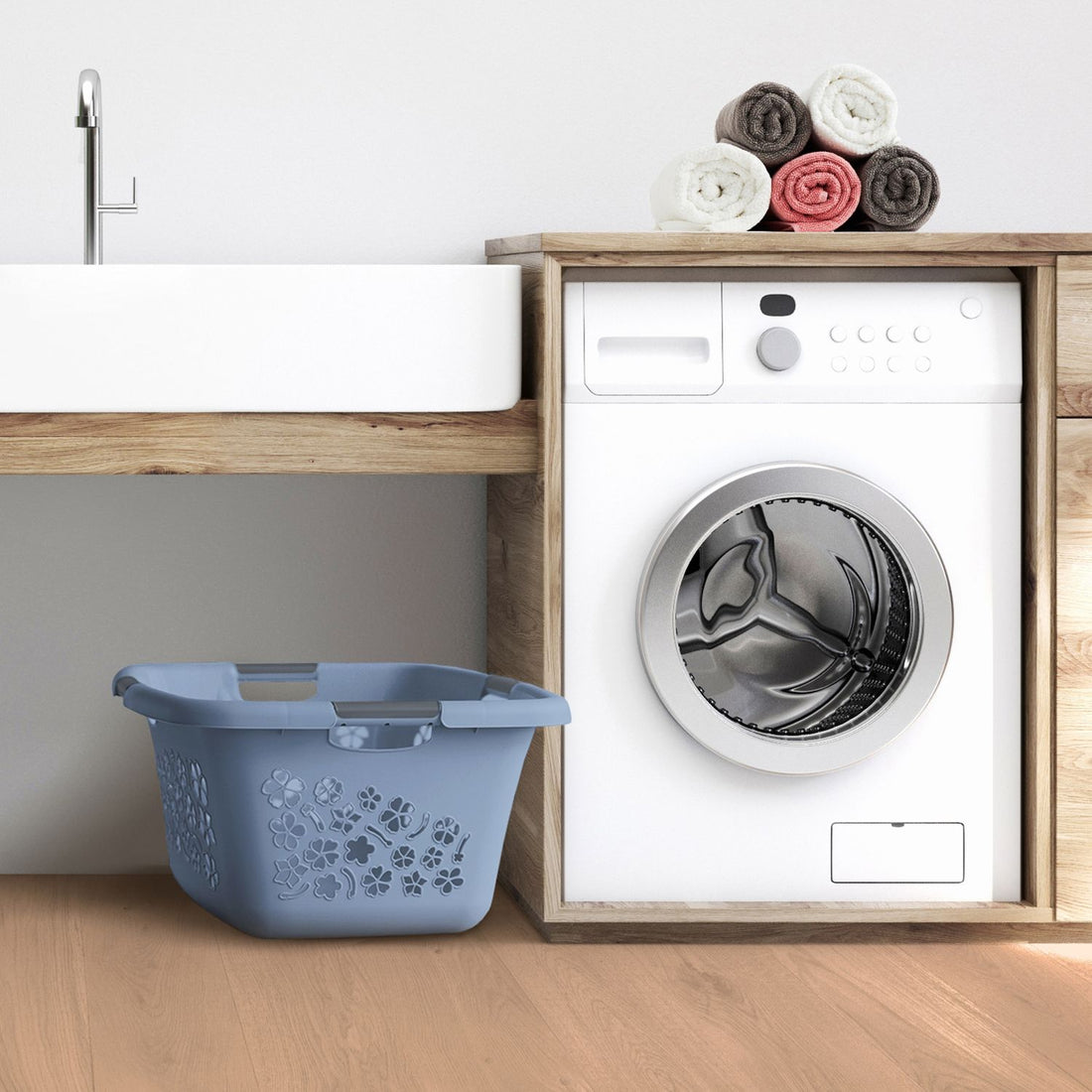Where to pour the laundry detergent? - Main wash

Or stay in our Polish store
Or stay in our Polish store
Or stay in our Polish store
Or stay in our Polish store
Have you ever wondered where exactly to pour the laundry detergent? It may seem like a trivial question, but the proper placement of detergent in the washing machine can significantly impact the effectiveness of the washing process. In this article, you will learn why it is so important where to put the powder and where to add the fabric softener.
The beginning of every wash starts with the proper placement of detergent in the washing machine. Incorrectly adding detergent can result not only in less effective cleaning but also in problems with the washing machine. Laundry liquid and laundry powder serve different functions, which is why their placement in the washing machine matters.
Laundry powder is used to remove stains and dirt from fabrics, while fabric softener adds softness and freshness to clothes. Therefore, it is essential to place them in the correct locations in the washing machine.
The compartments in the washing machine drawer are often marked with various symbols that indicate where to place specific detergents. Here are some of the most common symbols and their meanings:
Remember that it is always worth checking the washing machine's manual, as different models may have different markings.
If you are using traditional laundry powder, you are probably wondering which compartment to pour the powder into. Usually, you will find a special dispenser for laundry powder inside the washing machine (top-loading washing machines) or a compartment marked with a droplet symbol in the drawer (front-loading washing machines).
The amount of laundry powder to use is a key issue for the effectiveness of the washing process. The first factor to consider is the hardness of the water. Water with a higher concentration of minerals usually requires a larger amount of detergent to achieve adequate cleaning effectiveness. Additionally, the degree of soiling of clothes also matters - heavily soiled or stained fabrics may require more detergent to achieve satisfactory results. Furthermore, the capacity of the washing machine is important, as larger machines may require more powder to ensure proper dispersion of the detergent in the water and effective washing of larger amounts of clothes.
It is also worth remembering that the manufacturer's recommendations on the detergent packaging are important, as they take into account the specific characteristics of the detergent and the optimal amount to achieve the best washing results. Therefore, to ensure effective and efficient washing, it is always advisable to follow the manufacturer's recommendations regarding the amount of detergent to use for a specific washing cycle.
Pre-wash and main wash are two different processes related to fabric cleaning, which have different purposes and methods of execution.
In summary, the main difference between pre-wash and main wash is the purpose and scope of cleaning. Pre-wash aims to remove visible dirt and stains and prepare fabrics for deeper cleaning, while the main wash is a comprehensive cleaning process aimed at refreshing and cleaning fabrics of bacteria and impurities.
Liquid detergent is the equivalent of powder detergent. Therefore, it should be placed exactly in the same spot as the powder. As mentioned earlier, the most common place to pour liquid detergent is a special compartment in the washing machine drawer, marked with a flower symbol or the letter "C". This symbol indicates the compartment intended for fabric softener, which adds softness and a pleasant scent to your clothes. Pouring liquid detergent directly into the washing machine drum is not recommended, as it can lead to uneven distribution of the detergent and ineffective washing.
Determining the appropriate amount of laundry detergent is crucial for achieving excellent washing results. One of the factors to consider is the capacity of the washing machine. Larger washing machines may require a greater amount of detergent to ensure even distribution of the detergent and effective cleaning of a larger load of clothes. However, it is not only the capacity of the washing machine that is important. The degree of soiling of the clothes also affects the amount of detergent needed for washing.
Heavily soiled fabrics may require more detergent to achieve satisfactory results. Additionally, one should always follow the manufacturer's instructions found on the label of the detergent. These recommendations take into account the specific characteristics of the detergent and specify the optimal amount to use for a given washing cycle. Therefore, to ensure effective and efficient washing, it is always advisable to adhere to the manufacturer's recommendations regarding the amount of laundry detergent to use.
The fabric softener should be added to the compartment marked with the flower symbol. This is the last stage of the washing process and it adds softness and freshness to the clothes.
In a top-loading washing machine, you will usually find a special dispenser for fabric softener, located on the side of the device. You should pour the liquid into this dispenser before starting the wash cycle.
There are various types of laundry detergents available on the market, which can have different properties and compositions. Here are some popular types of laundry detergents:
When choosing a laundry detergent, it is worth paying attention to several factors, such as:
Regular cleaning of the washing machine drawer is crucial for maintaining hygienic washing conditions and preventing unpleasant odors and the accumulation of bacteria. The washing machine drawer, especially the compartments designated for washing and rinsing liquids, can become contaminated over time with detergent residues, calcium deposits, and mold. To effectively clean the drawer, it should be regularly removed from the washing machine and washed in warm water with a mild detergent. Then, thoroughly wipe all compartments and crevices to remove accumulated dirt. After drying the drawer, it is also worth applying a disinfectant to completely eliminate bacteria and unpleasant odors. Regular cleaning of the washing machine drawer not only ensures hygienic washing conditions but also extends the lifespan of the washing machine and keeps it in excellent condition for many years.
The proper placement of detergent in the washing machine is crucial for the effectiveness of the washing process. Remember to always check the washing machine's manual and the recommendations of the detergent manufacturer. By taking care of where you pour the powder and liquid, you can be sure that your clothes will be clean, fresh, and soft after every wash cycle.


